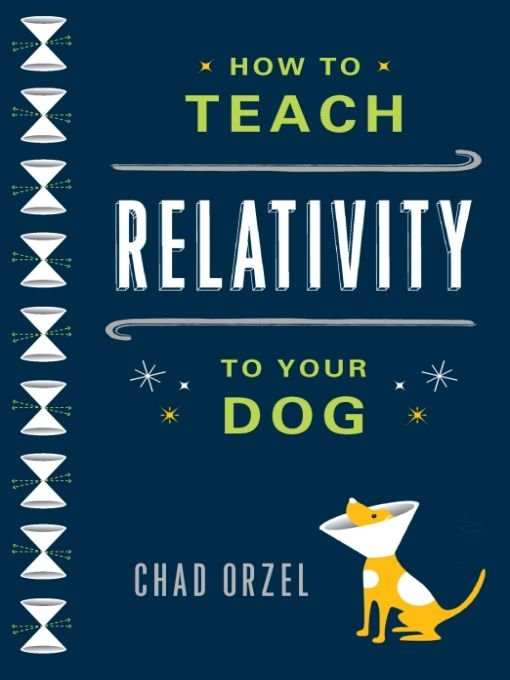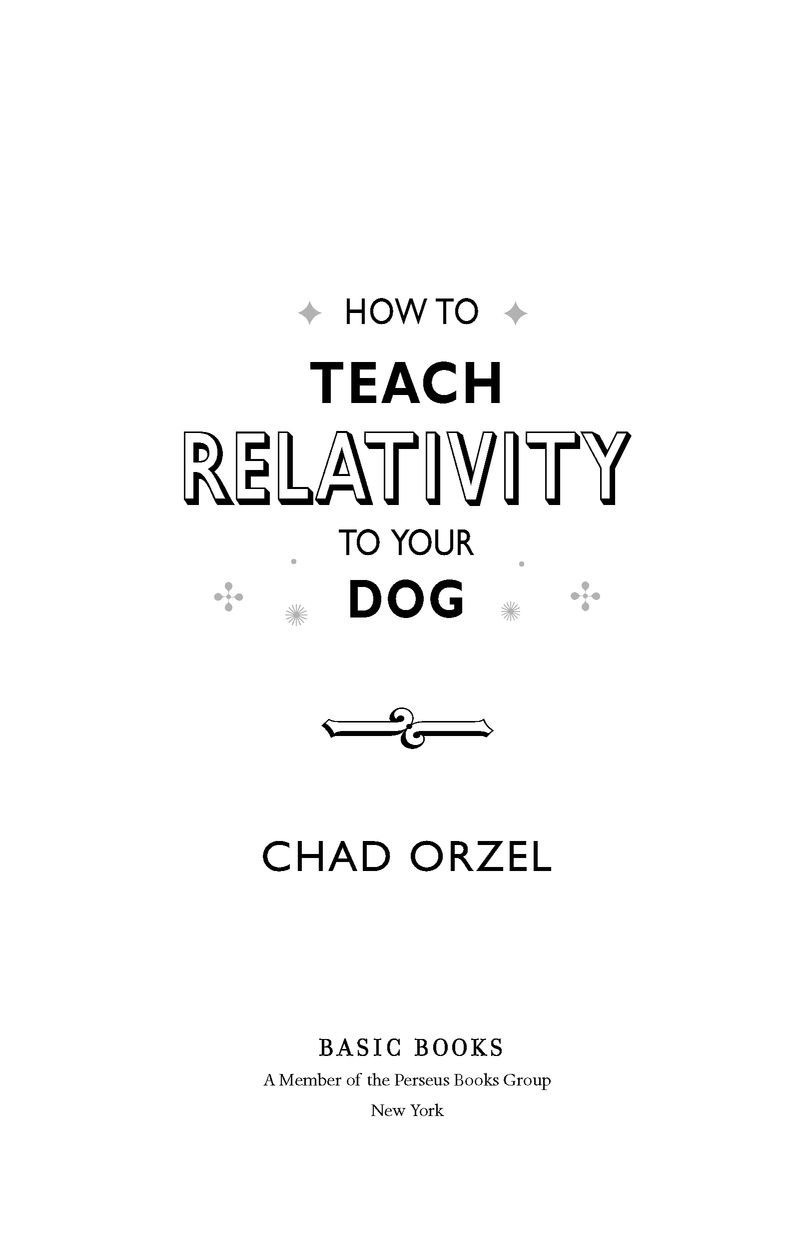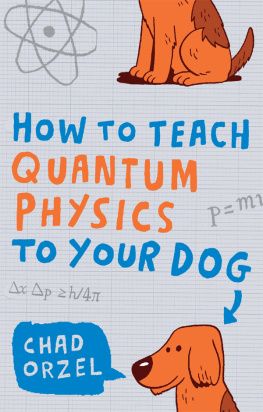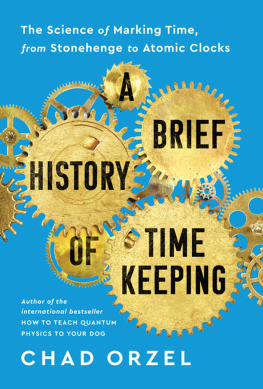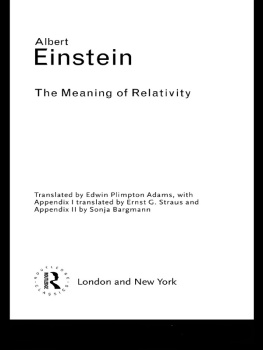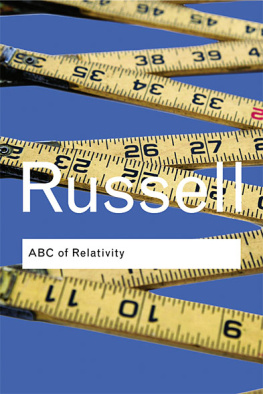Table of Contents
PRAISE FOR
How to Teach Relativity to Your Dog
For the price of a book, Orzel delivers the heady, joyful experience of taking a small college class with a brilliant and funny professor who really knows how to teach. A thoroughly winning romp through a rock-solid presentation of a beautiful subject.
Louisa Gilder, author of The Age of Entanglement
Move over, Kryptotheres a new superdog in town! Chad Orzels dog Emmy, having mastered quantum physics, now helps us understand Einsteins theories of relativity in a deep and accessible way. Get this dog a cape!
James Kakalios, Professor of Physics, University of Minnesota, and author of The Physics of Superheroes and The Amazing Story of Quantum Mechanics
Everyones favorite physics-loving canine is back, this time giving us a dogs eye view of Einstein and relativity. Physics professor Chad Orzel leads Emmy (and us) through an engaging tour of light speed, time dilation, and amazing shrinking bunnies (length contraction)not to mention what all this means for the search for the elusive bacon boson.
Jennifer Ouellette, author of The Calculus Diaries
With Nero, the egocentric cat who believes it is the center of the universe, and Emmy, the student dog whose questions and misunderstandings would drive any teacher to distraction, and whose interest in relativity is how E = mc2 can turn squirrels into energy, Chad Orzel has created a delightful cast of characters to make his introduction to relativity relatively painless. A cleverly crafted and beautifully explained narrative that guides readers carefully into the depths of relativity. Whether you are a hare or a tortoise, or even a dog, you will enjoy this.
Frank Close, author of The Infinity Puzzle
Emmy may be one smart dog, but her owner also happens to be an uncommonly gifted communicator. Chad Orzels treatment of special and general relativity is comprehensive, informative, and amazingly accessible, yet its funny too. This is, by far, the most entertaining discussion of the subject that Ive ever had the pleasure of reading.
Steve Nadis, coauthor of The Shape of Inner Space
For Claire.
Did I type today?
Yes I did, honey.
I typed a lot.
INTRODUCTION
ITS COLD AND FLU SEASON AGAIN, and between teaching at the college and a toddler in day care, I get every single bug that goes around. Im sitting at the dining room table grading exams when a coughing fit hits. When it finally stops, I take a drink of water, and then notice a thumping sound. I look over toward Emmy, on the floor next to the couch, and shes thumping her tail on the floor with her tongue lolling out the side of her mouth: the dog equivalent of a laugh.
Yeah, laugh it up, fuzzball. You think this is funny?
Sorry, she says, but at the end there, it sounded like you said. She barks twice, sounding a little like a cough. Thats really funny in Dog.
Yeah? Whats it mean?
Well, its... umm... You know, if you cant sniff your own butt, you wont get the joke.
Ill try to contain my disappointment, then. I turn back to my grading.
Ill think about it, and see what I can come up with, but translating humor is really hard.
Translating anything is hard. I say, not looking up.
Yeah? What do you know about translation?
Well, its what I do for a living.
Youre a physicist, not a diplomat.
Im a physics professor, I say, putting my pen down. In addition to doing physics, I teach physics to other people.
And dogs!
Yes, and dogs. Teaching physics necessarily involves translation. The natural way to express physics is through math, but most people dont think in mathematical terms. So, a lot of the business of teaching physics is finding ways to translate physical ideas from mathematical equations into concepts drawing on everyday language and experience.
So, making analogies and stuff like that?
Thats part of it, yes. I also spend a lot of time dealing with peoples preconceptions about how the world works. Sometimes, our intuition about how everyday objects behave leads us astray when we think about physics, and the first step in teaching the subject is to break down those preconceptions. Basically, to start over.
You wouldnt have that problem if you stuck to teaching dogs, she says, looking pleased with herself and her species.
No?
Nope. I have no clue at all about how things work. Im a clean slate, when it comes to physics.
I wouldnt go that far, but you at least have a different set of preconceptions than most humans do. Which means that thinking about physics as it appears to a dog can be a useful thing to dolooking at the problem from a different angle, and with an open mind, can sometimes give you insight that you wouldnt get by going straight at your own misconceptions.
So, when you think about it, teaching physics to me helps you teach physics to humans.
Yeah, it does.
Which means that in a sense, its part of your job, right? She trots over to me and sits down, looking hopeful.
I know where youre going with this, so let me remind you that grading these papers is also part of my job. I need to turn my final grades in tomorrow, so thats the more important part right this minute.
Oh. She deflates a little.
But tomorrow is also the start of our break, so Ill have time to spend talking to you about physics, if you want.
Preferably while taking long walks!
Sure, that works. So, let me finish grading these exams, while you think about what areas of physics youd like to learn about, OK?
OK! She trots off in the direction of the library, and I go back to my grading. As I start on the next paper, I hear her saying Maybe I can finally find out what this Einstein guy was all about...
Ask any human, or most dogs, to picture a scientist, and odds are good that their mental image will look a lot like the iconic pictures of Albert Einsteinwhite hair sticking in all directions, rumpled clothes, maybe even a German accent and a distracted air. This is a little unfair to scientists.
Asked why Einstein is a famous scientist, even dogs can come up with the equation E=mc2, and possibly the words theory of relativity. Explaining what those mean, and where they come from, is beyond most humans, though, let alone dogs. This is an unfortunate state of affairs, as Einsteins theory of relativity is one of the cornerstones of modern physics. Along with quantum mechanics, relativity completely revolutionized the way scientists view our universe. It provides insight into problems that classical physics cant handle, and poses new problems that physicists still grapple with a hundred years later.
Unfortunately, the features that make relativity so essential to physics also make it extremely intimidating to non-physicists. Relativity deals with situations that are very foreign to our everyday experience of the universeobjects moving thousands of times faster than the fastest man-made objects, astronomical objects packing enormous masses into tiny spacesand its predictions defy all our normal expectations. Relativity tells us that quantities that seem fundamentaldistances through space, and duration in timein fact vary from one observer to another. A moving clock ticks at a different rate than a stationary one. A clock near a massive object ticks at a different rate than one farther away. And space itself is stretched by the presence of mass, so the length of a path between two points depends on what you pass along the way.

